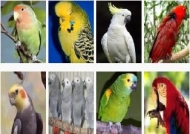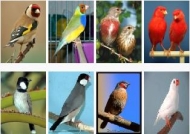 The International Community of Aviculture |
 |
 la Communauté internationale d'Aviculture |
| Home | Forums | ICA Arabic | ICA Arabic Community | Rules | Contact us |  |
 |
 |
 |
 |
 |
|---|
| It is currently Fri Apr 26, 2024 4:13 am |
|
• All times are UTC |
 
|
Page 1 of 1 |
[ 4 posts ] |
|
| Author | Message | ||
|---|---|---|---|
| mahseh |
|
||
|
Joined: 10 Jun 2008 Posts: 98 Topics: 44 Gender: |
|
||
| Breeder: cockatiels | |||
| Abdo Abu Seir |
|
|||||||
Joined: 20 Jan 2008 Age: 54 Posts: 172 Topics: 103 Location: Palestine Gender: |
|
|||||||
| Breeder: canaries | ||||||||
| mahseh |
|
||
|
Joined: 10 Jun 2008 Posts: 98 Topics: 44 Gender: |
|
||
| Breeder: cockatiels | |||
| macawfacts |
|
||||
|
Joined: 08 May 2012 Posts: 2 Gender: |
|
||||
| Breeder: http://www.birdtrainingapp.com/parrot-information/ | |||||
 
|
Page 1 of 1 |
[ 4 posts ] |
|
• All times are UTC |
Who is online |
Users browsing this forum: No registered users and 64 guests |
| You cannot post new topics in this forum You cannot reply to topics in this forum You cannot edit your posts in this forum You cannot delete your posts in this forum You cannot post attachments in this forum |
The International Community of Aviculture
ICA© 2014 : All rights reserved
Contact us
Best viewed more than 1024*768 pixels
ICA© 2014 : All rights reserved
Contact us
Best viewed more than 1024*768 pixels















